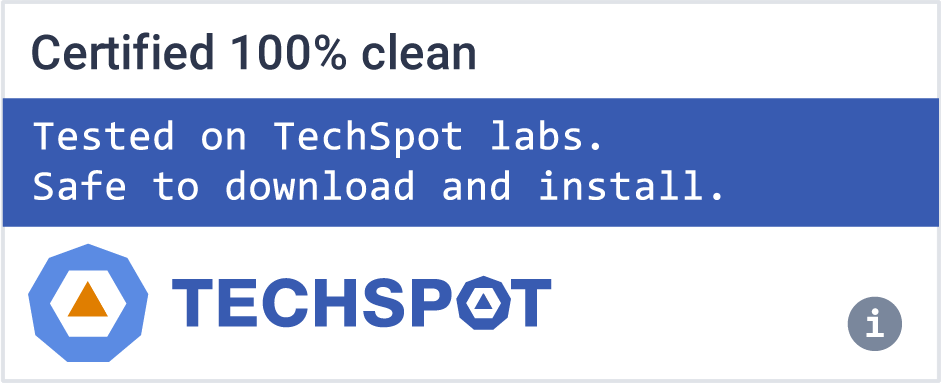We set out in 2025 to reimagine Firefox's design to be fast, modern and inviting the first time you run it and every day after. We've always had your back on privacy, and still do. Now with today's new Firefox release we're also bringing you a modern new look designed to streamline and calm things down so you have a fresh new web experience every time you use Firefox.
We're living in a frenetic time, where people are dealing with tough changes in our daily lives and hard to solve problems are popping up everywhere. We think the browser should be a piece of software you can rely on to have your back, pleasant to look at and working seamlessly with the web.
We're also on a mission to save you time, whether that's by making pages load faster, using less memory, or by streamlining everyday use of the browser. Good design is invisible. So if things just work, you don't really think about it. But a ton of thought has been put into the flow. Our users who have tried the new Firefox have said, "the fact that I was using a new web browser slipped into the background of my consciousness." And that's just what we were going for.
A sleek, clean Firefox design backed by research
Going into the Firefox redesign, our team studied how people interact with the browser, observing their patterns and behaviors. We listened to feedback and gathered ideas from regular people who just want to have an easier experience on the web. We obsessed over distractions, extra clicks and wasted time. The resulting new design is simple, modern and fast and delivers a beautiful experience to support what people do most in Firefox.
Bright and buoyant throughout
The fresh new Firefox is easy on the eyes, bright and buoyant on screens of all sizes --- computers, phones and tablets. A new icon set, crisp typography and thoughtful spacing throughout all reflect a modern aesthetic.
Streamlined toolbar and menus
The toolbar is naturally where you start every web visit. It's the place where you type a URL to go somewhere online. After web page content, it's what you look at most in Firefox. The new toolbar is simplified and clutter-free so you get to the good stuff effortlessly.
Menus are where key Firefox actions and commands live. We've consolidated extra menus to reduce clutter and be more intuitive through the three bars menu in the upper right or by right-clicking to activate it on your computer screen. The new look reorganized and streamlined our menus to put the best actions quickly at your fingertips.
When privacy protections are engaged in Firefox, the shield icon in the toolbar glows subtly indicating that we're working behind the scenes to protect you from nosy trackers. Fun fact: Firefox has blocked more than 6 trillion --- that's trillion with a T --- trackers since we rolled out enhanced tracking protection, stopping thousands of companies from viewing your online activity.. We're talking about tracking cookies, social media trackers, fingerprinters, cryptominers and more. Go ahead and click on the shield to see who and what Firefox is blocking... you might be surprised by what you find out.
A new look for tabs
Based on our research, we found out that more than half of you have 4+ tabs open all the time, and some of you have more, a lot more. And we feel that! Tab as much as you like, friends. Tabs got a makeover so they are now gently curved and float above the toolbar. It's an exciting change that also serves as a reminder that tabs aren't stationary. So grab those tabs, move them around and organize them as you like. Tabs also got a glow-up to be a touch brighter when active.
Shhhhhh.... notifications
No one likes to be interrupted when they're in the flow, but if you must be alerted to something, at least it can look good. We've updated notifications and alerts of all kinds in Firefox to take up less space for less jarring interruptions. Plus, non-essential alerts and messages have been removed altogether. Media autoplay is turned off by default, so you won't be interrupted by a random video blasting unexpectedly. Spotting a noisy tab is easy, and unmuting/muting takes just a quick click on the tab itself.
Expanded privacy protections
Mozilla makes it our mission to put your privacy and security first in the technology we develop. Our goal is for you to worry less every time you go online. The latest Firefox release comes to you with next-level security and privacy that you've come to expect from us.
The best private browsing mode out there
All browsers have a private browsing mode, but none match Firefox. The popular Total Cookie Protection moves from the optional strict setting to always-on in private browsing. This feature maintains a separate "cookie jar" for each website you visit while browsing privately. Any time a site deposits a cookie, Firefox locks it up in its own cookie jar so that it can't be shared with any other website.
An even better Firefox for iOS and Android
The fresh new look covers Firefox everywhere, from desktop browsers to Android and iOS mobile devices. The iOS experience is optimized for iPhone and iPad, with key actions now taking fewer steps for quicker searches, navigation and tab viewing. With refinements in iconography and menu names, the whole browsing experience is more cohesive and harmonious across every platform.
Shape Up Your Floats
CSS Shapes lets a floated element sculpt the flow of content around it beyond the classic rectangular bounding box we've been constrained to. For instance, in the above screenshot and linked demo, the text is wrapping to the shape of the grapes vs the image's border. There are properties for basic shapes all the way up to complex polygons.
You can learn more in Josh Marinacci's post on the new CSS Shapes tooling from yesterday.
Variable Fonts Are Here
No punny title, I'm just excited! OpenType Font Variations allow a single font file to contain multiple instances of the same font, encoding the differences between instances. In addition to being in one file, font creators can expose any number of variation axes that give developers fine-grained control on how a font is rendered. These can be standard variations like font weight (font weight 536 looks right? no problem!) or things that were never previously available via CSS (x-height! serif-size!). In addition to the candy-store possibilities for typography nerds, being able to serve a single file with multiple variants is a major page weight savings. Dan Callahan goes much deeper on the grooviness to be found and how Firefox makes it easy to tweak these new custom values.
Devtools Commands
The Developer Toolbar was an alternate command repl input in the Firefox Developer tools, apart from the Web Console. I say "was" because as of Firefox 62, it has been removed. It was always a bit hard to find and not as well-advertised as it could be, but did encapsulate some powerful commands. Most of these commands have been progressively migrated elsewhere in the devtools, and this is wrapped up in Firefox 62, so we've removed the toolbar altogether.
One of the last commands to be migrated is screenshot, which is a power-user version of the "take a screenshot" button available in the devtools UI. The screenshot command is now available as :screenshot in the Web Console. For example, have you ever needed a high-res screenshot of a page for print? You can specify a higher pixel density for a screenshot via the command: :screenshot --dpr 4.
There are a bunch of other options as well, such as specifying output filenames, capture delays, and selector-cropped screenshots. Eric Meyer wrote a great primer on the power of :screenshot on his blog, and it will change your page capture game.
What's New
New
- Vertical Tabs: You can now keep more - or fewer - pinned tabs in view for quicker access to important windows. Just drag the divider to resize your pinned tabs section.
- Custom Search Engines: Firefox now supports adding even more search engines. To add a custom engine, right-click a search field of a supported website and select "Add Search Engine", or go to Settings > Search > Add (below the search shortcuts table) to manually enter a search URL.
- Firefox Extensions: Customize your toolbar with the option to remove the extensions shortcut, giving you more control over your browser. When the button is hidden, you can access the extensions panel again at any time from the Firefox menu by clicking the Extensions menu item.
- You can now unload tabs by right-clicking on a tab (or multiple selected tabs) and selecting "Unload Tab". This can speed up performance by reducing Firefox's memory and CPU usage.
- Full-Page Translations now prioritizes translating only the content near your current view, improving speed and responsiveness. Content outside your view is skipped unless you scroll to it, reducing unnecessary resource usage.
- Firefox builds in Arabic now come with a built-in Arabic dictionary for the Firefox spellchecker.
- Address autofill enabled for users in Italy, Poland, and Austria.
Fixed
- Various security fixes.
Changed
- The Pocket toolbar icon, as well as the Pocket integrations on New Tab, have been removed per the service shutdown announcement.
Enterprise
- You can find information about policy updates and enterprise specific bug fixes in the Firefox for Enterprise 140 Release Notes.
Developer
- Improved the search feature in the Inspector panel to help developers more effectively search the DOM of the current page. Sorting the results by the number of matching elements, support "pseudo" selector state, etc.
Web Platform
- Added platform support for aria-keyshortcuts in Linux, macOS, and Windows.
- Added support for the CookieStore API, an asynchronous cookie API for scripts running in HTML documents and service workers.
- Added support for the Custom Highlight API, which allows styling arbitrary text ranges. Support for text-decoration is not included and is planned for an upcoming release.
- Added support for the pointerrawupdate event. This event provides lower-latency access to pointer movements by firing as soon as the pointer data is available, typically before the main pointermove event. Unlike pointermove, it performs an additional hit test to determine the target and fires more frequently, which may impact performance even if only a listener is added. This event is intended for applications that require high-precision input handling and cannot achieve smooth interaction using coalesced pointermove events alone.
- Service Workers are now available in Private Browsing Mode. This enhancement builds on our efforts to support IndexedDB and the DOM Cache API in Private Browsing through encrypted storage. With this change, more websites, especially those that rely on background tasks, will be able to benefit from Service workers.
- Firefox now applies a uniform user agent (UA) style to 'h1' elements, regardless of whether they are used inside 'article', 'aside', 'nav', or 'section'.
- Firefox will now escape less-than (<) and greater-than (>) symbols when serializing HTML attributes, making certain mXSS attacks on websites more difficult.

